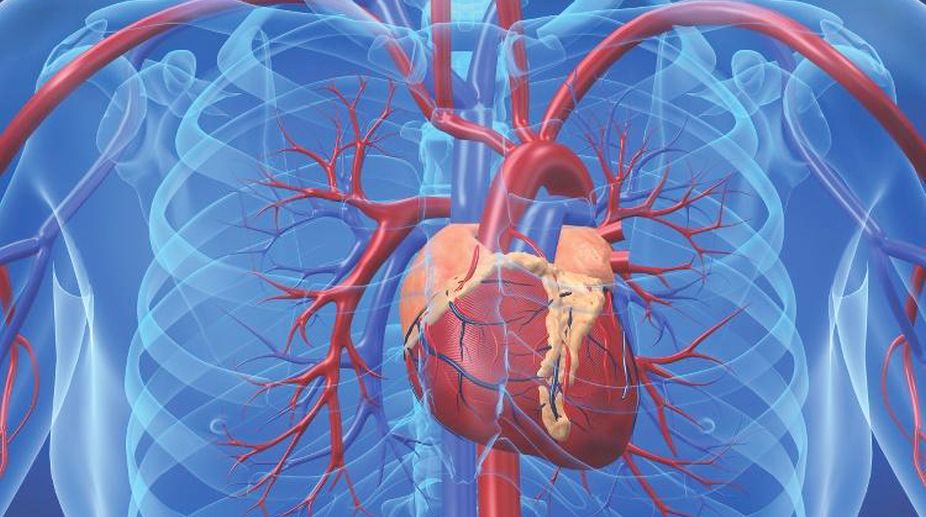Another report titled Economics of Non-Communicable Diseases in India, 2014, crafted by the World Economic Forum and the Harvard School of Public Health examines the economic impact of such diseases to the Indian economy. It has been calculated that the country stands to lose $4.58 trillion before 2030 due to NCDs and mental health conditions. Moreover, lifestyle diseases can impede workforce productivity by increasing the rates of absenteeism, diminishing the energy and focus on workers, and depleting critical workplace skills. Let us examine the most common types of lifestyle diseases affecting us as a race and a geographical entity.
Cardiovascular diseases (like heart attacks and stroke) have emerged as the top contender among others to be responsible for causing the maximum mortality globally as well as in India. Over six million people died of NCDs in India in 2016, with Ischemic heart being the leading cause of death, according to the findings of the 2016 study that has recently been published in the medical journal, The Lancet. Genetically, Indians are susceptible to high cholesterol levels and diabetes.
Advertisement
This has assumed an epidemic proportion. High blood pressure, smoking and diabetes are among the factors known to increase the risk of stroke, a condition in which the blood supply to a region of the brain is obstructed or a blood vessel in the brain bursts.
Nearly 15 per cent of the planet’s adult population smokes. Tobacco is the world’s leading preventable cause of death, responsible for the death of six million people yearly. About one in ten of those deaths are caused by cardiovascular disease. Smoking impacts circulation by narrowing the arteries, damaging the lining of blood vessels and increasing the risk of blood clots. This more than doubles the risk of suffering a heart attack or stroke and shortens a smoker’s life by about a decade. Drinking is also a massive problem.
Each year, alcohol kills more people than AIDS and tuberculosis combined, about 2.5 million in all, including more than 3 lakh individuals who have not yet reached their 30th birthday. Those deaths are due to injury, cirrhosis of liver, cancer and heart ailments. Heavy drinking can raise blood pressure and increase the risk of stroke. It enlarges the heart and raises harmful triglycerides.
Another contender that is trying to attain the No. One position in terms of mortality rates is diabetes. India is home to the highest number of diabetics; roughly 30 million and growing daily. It has been predicted that the country will be saddled by 80 million diabetics by 2030. Type 1, an autoimmune condition and Type 2, an insulin-malfunction condition have become a possible threat for every human life. Several studies highlight the nutritional status of ancestors to be the major “causative factor”, apart from lifestyle changes. Generations of malnutrition followed by rapid changes of lifestyle have led to a surge in the number of people affected by metabolic disorders.
Every biochemical activity is coded in our DNA and the sudden increase in energy-dense food has caused severe alterations at the epigenetic level, resulting in obesity. Certain factors behind Type 2 diabetes have been identified, and this makes Indians and South Asians generally more prone to suffer than their European counterparts.
Such dissonances have been collectively termed as ‘evodeviation’. This implies that human cultural evolution, determining the sources and methods of food production, has occurred at an ever-increasing pace, whereas human biology has simply not had time to adapt to the evolutionary process. Lack of exercise, unhealthy eating habits and stress are to an extent manageable.
Obesity is the most visible and yet most neglected non-communicable disease. Without immediate action, millions suffer from an array of serious health disorders because of growing overweight and obesity. Joint disorders like osteoarthritis, diabetes, heart diseases, etc. are among the consequences. Obese populations have a 69 per cent higher risk of coronary heart disease and a 47 per cent greater chance of suffering a stroke than those with normal weight.
Obesity is one of the major public health challenges of the 21st century. India is ranked to be third most obese country in the world. The country is now battling both obesity and malnutrition. In India, two in five children are malnourished, yet one in five is overweight. Over-reliance on proceed foods rich in fat and sugar are responsible for abdominal obesity.
Certain types of cancers can be attributed to familial/genetic disorders. Cancer of the breast and colon have been linked to obesity, while consumption of tobacco and diet with a high salt content can cause tongue, oral and gastrointestinal cancer. Obesity and sedentary lifestyle have been linked to around 13 different types of cancer. Treatment of cancer entails a huge expenditure, driving poor families to penury.
Others NCDs include professional stress, heat, sound, dust, fumes, pollutants etc. which can cause respiratory failure and increased risk of strokes, adverse lung condition. Certain factors can also disturb our biological clock causing irritability, mood swings, fatigue, etc, weakening our immune system and resulting in many other complications.
If these lifestyle diseases are not checked, this ‘slow-motion disaster’ (a term coined by former WHO Director General Margaret Chan) could render struggling nations bankrupt and leave citizens further mired in poverty. NCDs threaten progress towards the 2030 Agenda for Sustainable Development, which includes a target of reducing premature deaths from NCDs by one-third by 2030 through prevention and treatment.
With so many proven statistics in hand, it is imperative to tighten our laces, strengthen our collective action to take the steps required for the optimal approach to the prevention and control of such ailments. An active lifestyle, healthy diet and the need to avoid smoking, drinking and drugs must be encouraged.
In the words of Paul Bulcke, CEO, Nestle, Switzerland: ‘We speak about healthcare, and most of the time we are talking about caring for sick people, not caring about health. At the end of the day, health is not something you ‘use’, it is something you keep. But we can only create and ‘keep’ health by working together to provide a broad health-promoting ecosystem with the individual at the centre.’
(The writer is a retired IAS officer)











